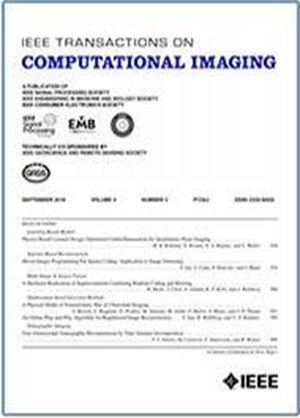基于等变自适应阈值学习的毫米波非视距SAR成像
IF 4.8
2区 计算机科学
Q2 ENGINEERING, ELECTRICAL & ELECTRONIC
引用次数: 0
摘要
从隐藏目标的间接散射回波中重建高精度二维/三维合成孔径雷达(SAR)图像是毫米波(mmW)非视距(NLOS)环境感知的核心技术挑战。深度学习方法在SAR成像中表现出优异的性能。然而,现有的方法主要是为视距(LOS)场景设计的,在视距场景中,干净的LOS模拟信号可以用于训练目的,由于复杂的多径环境和噪声,NLOS成像通常难以或不可能满足这一条件。为了在特定的NLOS配置中解决这个问题,特别是那些涉及离散的、孤立的隐藏物体的强镜面反射的NLOS配置,我们提出了一种为毫米波SAR定制的等变成像(EI)框架。EI框架是一种完全自监督的学习方法,利用信号分布中的群不变性,能够从受噪声和多路径伪像污染的部分NLOS测量中实现鲁棒图像重建。在我们的方法中,重构函数基于具有全变分(TV)约束的深度展开网络,将NLOS散射回波映射到目标图像。此外,我们在重建过程中引入自适应峰值卷积网络(APConv)来动态调整阈值,取代传统的固定阈值方法。这提高了在这些定义的NLOS条件下成像的灵活性和质量。最后,我们通过实验毫米波系统收集的各种NLOS回波数据验证了所提出的方法。数值和视觉结果都证明了我们的方法对NLOS毫米波SAR成像任务的有效性。因此,提出的EI框架为推进NLOS毫米波SAR感知能力提供了一种有希望的方法,特别是对于与我们当前实验研究和支持的环境和目标配置相一致的环境和目标配置。本文章由计算机程序翻译,如有差异,请以英文原文为准。
Non-Line-of-Sight mmW SAR Imaging With Equivariant Adaptive Threshold Learning
High-precision 2-D/3-D Synthetic Aperture Radar (SAR) image reconstruction from the indirect scattered echoes of hidden targets represents a core technical challenge in millimeter-wave (mmW) Non-Line-of-Sight (NLOS) environmental perception. Deep learning approaches have demonstrated exceptional performance in SAR imaging. However, existing methods are predominantly designed for Line-of-Sight (LOS) scenarios, where clean LOS simulation signals can be acquired for training purposes, a condition often difficult or impossible to meet in NLOS imaging due to complex multipath environments and noise. To tackle this issue within specific NLOS configurations, particularly those involving strong specular reflections from discrete, isolated hidden objects, we propose an Equivariant Imaging (EI) framework tailored for mmW SAR. The EI framework is a fully self-supervised learning approach that leverages the group invariance present in signal distributions, enabling robust image reconstruction from partial NLOS measurements contaminated with noise and multipath artifacts. In our method, the reconstruction function is based on a deep unfolding network with Total Variation (TV) constraints, mapping the NLOS scattered echoes to the target image. Moreover, we introduce an Adaptive Peak Convolution Network (APConv) into the reconstruction process to dynamically adjust thresholds, replacing traditional fixed-threshold methods. This enhances imaging flexibility and quality under these defined NLOS conditions. Finally, we validate the proposed method using various NLOS echo data collected through an experimental mmW system. Numerical and visual results both demonstrate the effectiveness of our approach for NLOS mmW SAR imaging tasks. The proposed EI framework thus offers a promising approach for advancing NLOS mmW SAR perception capabilities, particularly for environments and target configurations aligning with those investigated and supported by our current experiments.
求助全文
通过发布文献求助,成功后即可免费获取论文全文。
去求助
来源期刊

IEEE Transactions on Computational Imaging
Mathematics-Computational Mathematics
CiteScore
8.20
自引率
7.40%
发文量
59
期刊介绍:
The IEEE Transactions on Computational Imaging will publish articles where computation plays an integral role in the image formation process. Papers will cover all areas of computational imaging ranging from fundamental theoretical methods to the latest innovative computational imaging system designs. Topics of interest will include advanced algorithms and mathematical techniques, model-based data inversion, methods for image and signal recovery from sparse and incomplete data, techniques for non-traditional sensing of image data, methods for dynamic information acquisition and extraction from imaging sensors, software and hardware for efficient computation in imaging systems, and highly novel imaging system design.
 求助内容:
求助内容: 应助结果提醒方式:
应助结果提醒方式:


